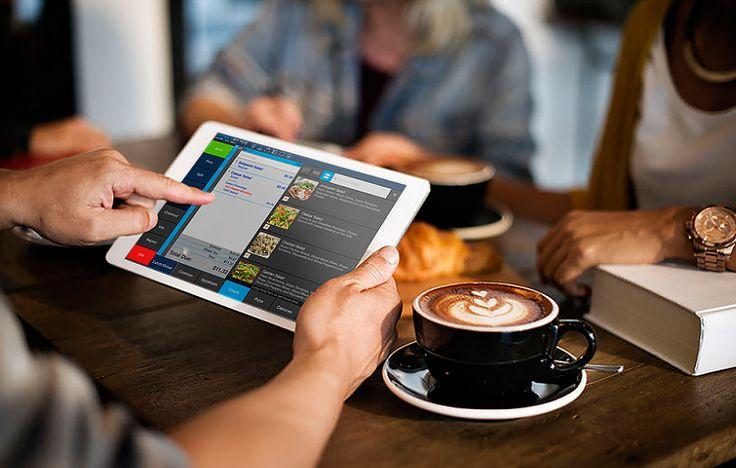Choosing the Best Ordering Platform for Restaurants

Choosing the Best Ordering Platform for Restaurants
In today’s fast-paced digital era, selecting the right ordering platform for restaurants is more crucial than ever. As the restaurant industry continues to evolve, leveraging technology to enhance efficiency, customer service, and overall operational success has become a fundamental aspect of thriving in this competitive market. An effective ordering platform not only streamlines the ordering process but also significantly improves the customer experience, leading to increased sales and higher customer satisfaction.
This comprehensive guide will explore the importance of an ordering platform, detailing key features that can elevate your restaurant’s operations. Whether you are a small diner or a large-scale restaurant, understanding what to look for in an ordering platform is vital for meeting the unique needs of your business. In the following sections, we will provide a comparative analysis of the top ordering platforms available, alongside expert tips to help you choose the best solution that aligns with your restaurant’s specific objectives and customer demands.
Understanding the Importance of an Ordering Platform for Restaurants
In the dynamic world of food service, the role of an ordering platform for restaurants has become increasingly significant. With the rise of online ordering and food delivery services, having a robust ordering platform not only enhances operational efficiency but also significantly improves customer satisfaction. As consumers increasingly turn to digital solutions for their dining choices, selecting the right ordering platform can set a restaurant apart from the competition.
Enhancing Efficiency and Customer Experience
The primary purpose of an ordering platform for restaurants is to streamline the purchasing process from the customer’s perspective. Whether through a website, mobile app, or in-store kiosk, these platforms enable customers to view menus, place orders, pay, and even schedule delivery or pickup with ease. This level of convenience often translates into higher customer retention rates and increased average order values.
Moreover, by automating order processing, restaurants can reduce the chances of human error, leading to improved accuracy in orders. Efficient order management systems also allow staff to focus on providing high-quality service instead of getting bogged down with taking orders manually. This, in turn, enhances the overall customer experience, making dining establishments more appealing to patrons.
Key Features to Look for in an Ordering Platform
When evaluating an ordering platform for restaurants, several key features should be prioritized:
- User-Friendly Interface: The platform should provide a seamless user experience for customers, ensuring they can navigate through the menu and complete their orders effortlessly.
- Mobile Responsiveness: Given that many customers prefer ordering via smartphones, the platform must be optimized for mobile users.
- Customizable Menu Options: The ability to easily update the menu, prices, and availability in real-time is essential to accommodate changing customer preferences and seasonal items.
- Payment Processing: Efficient payment gateways that support multiple payment options—including credit cards, mobile wallets, and cash on delivery—are critical for customer convenience.
- Integration with POS Systems: The ordering platform should integrate seamlessly with the restaurant’s POS system, providing a consolidated view of sales, inventory, and order management.
- Customer Support: Strong technical support is vital for troubleshooting issues quickly and minimizing any disruptions during service hours.
The Impact of a Well-Chosen Platform on Sales and Operations
Implementing a suitable ordering platform can substantially affect both sales and operational efficiency. A well-designed system not only speeds up the ordering process but also enables restaurants to gather invaluable insights into customer preferences and ordering behaviors. By analyzing this data, restaurant owners can make informed decisions to tweak menus, optimize pricing strategies, and create targeted marketing campaigns.
Additionally, leveraging an effective ordering platform can help increase sales. Features like loyalty programs, targeted promotions, and upselling options can entice customers to spend more. For instance, offering bundle deals or suggesting add-ons at checkout can maximize the average order value while enhancing customer satisfaction by providing tailored recommendations.
Furthermore, during peak hours, when staffing might be stretched, an efficient ordering platform can help manage customer flow by taking orders more swiftly, allowing for quicker service delivery. This not only enhances the dining experience but also improves table turnover rates, ultimately leading to higher profitability.
Conclusion
In conclusion, the importance of an ordering platform for restaurants cannot be overstated. Not only do these platforms enhance operational efficiency and improve customer experiences, but they also have a direct and positive impact on sales. By prioritizing key features and ensuring a seamless integration into existing operations, restaurants can position themselves advantageously in a competitive market. Whether you’re a small café or a large restaurant chain, choosing the right ordering platform is integral to achieving long-term success in the hospitality industry.
Get in Touch
At ordable/, we’re dedicated to helping businesses streamline their operations. Ready to transform your order management and boost your sales?

